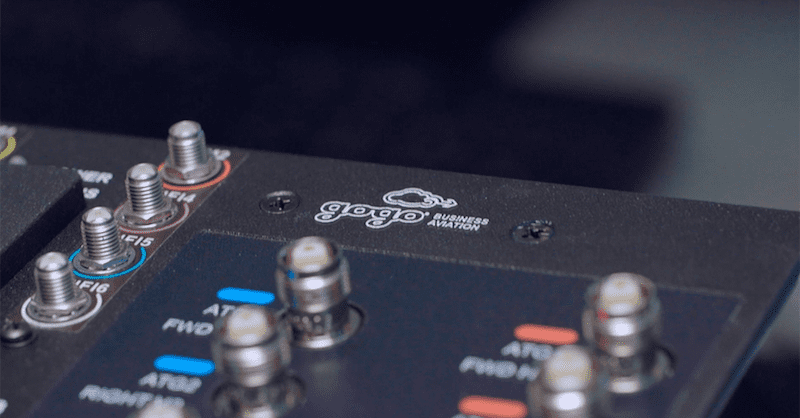
As the COVID-19 coronavirus pandemic continues to hit all segments of the aviation industry, Gogo is slowly starting to see business jet operators reactivate suspended service plans. Photo: Gogo Business Aviation
Despite experiencing 940 pandemic-related account suspensions among business jet operators, Gogo CEO Oakleigh Thorne said he expects that segment of the company’s operations to start installing and operating its technology sooner than the other side of its business, commercial airlines.
During the company’s second quarter 2020 earnings call, Thorne provided updates on how many operators downgraded service plans in the first quarter and where Gogo is currently starting to see some service plan reactivations. The company also has plans for diversifying the capabilities of its existing 2Ku antenna.
“Because of the dramatic reduction in flights, many aircraft owners, this is in [business aviation] BA, parked their aircraft in the March-April time frame, and approximately 30 percent of our 5,700 [air-to-ground] ATG accounts took some action to reduce their spending with Gogo, including 940 account suspensions and more than 750 service plan downgrades,” Thorne said. “All that said, it looks like we bottomed out mid- to late April and now are seeing green shoots in both our businesses. So there is some cause for optimism.”
Gogo reported consolidated revenue of $184.5 million and a net loss of $84.8 million for the quarter. The $84.8 million in net loss was an increase of 405 percent over $16.8 million net loss the company experienced in the first quarter of 2019.
The optimism Thorne spoke of started to emerge last week for their business aviation division. In April, the number of business jets flying with Gogo connectivity per day were down 78 percent compared to the same period a year ago. However, the decline started turning around recently, with the average number of daily connected business jet flights up 200 percent from the low point in April and more than 60 percent above the daily average last month. As of last Friday, Gogo also accounted for a total of 218 service reactivations in its business aviation segment.
In April, the company announced that it would furlough 54 percent of its workforce in May, impacting about 600 employees. Some employees at Gogo’s business aviation headquarters in Colorado started returning to work on May 11, under the state’s shift from a “work from home” to a “safe from home” policy, according to Thorne.
Thorne also discussed Gogo’s focus on a multi-orbit, multi-spectrum future strategy where it will look to equip aircraft with technology that is compatible with multiple different satellite networks and bands, rather than limiting them to one.

Gogo has developed a method for converting its Ku-band antenna, pictured here, into a Ka-band antenna, to provide operators with more options in the near future. Photo: Gogo
“On the multi-orbit front, Gogo’s unique 2Ku mechanical phased array antenna is the only terminal technology proven capable of working with an [non-geo stationary orbit] NGSO satellite constellation, as demonstrated with OneWeb earlier this year. On the multi-spectrum front, Gogo has developed the ability to cost effectively convert a 2Ku antenna into a 2Ka antenna, which could open up the Gogo 2Ku fleet to Ka operators as well as Ku operators,” Thorne said, adding that having such a strategy is important both to operators and potential merger partners.
On the commercial airline side, Gogo experienced a 91 percent reduction of in-flight connectivity sessions and a 66 percent reduction in sales in April. Thorne explained the difference in the reduction of sessions versus sales can be attributed to the subscription plans and monthly revenue guarantees it has established with some of its airline customers.
One step the company is trying to take to ease the cost burden both on itself and airlines is delaying installations tied to older purchases where equipment was heavily subsidized. This means Gogo will have very few installations planned for the remainder of 2020.
 | Want to hear more on aircraft connectivity applications? Check out the Global Connected Aircraft Podcast, where Avionics editor-in-chief Woodrow Bellamy III interviews airlines and industry influencers on how they’re applying connectivity solutions. |
Although Thorne expects the business aviation segment to recover faster, he noted some signs of optimism on the commercial airline side as well.
“We hear from airlines that bookings are starting to overtake cancellations. They’re starting to add some international routes back in May, and load factors are picking up. Assuming that as a society we continue to make progress against the pandemic, we think that commercial air travel will come back faster than it did after 9/11 because the airline industry is much more sophisticated in managing this product and marketing its product than it was 15, 20 years ago,” Thorne said.